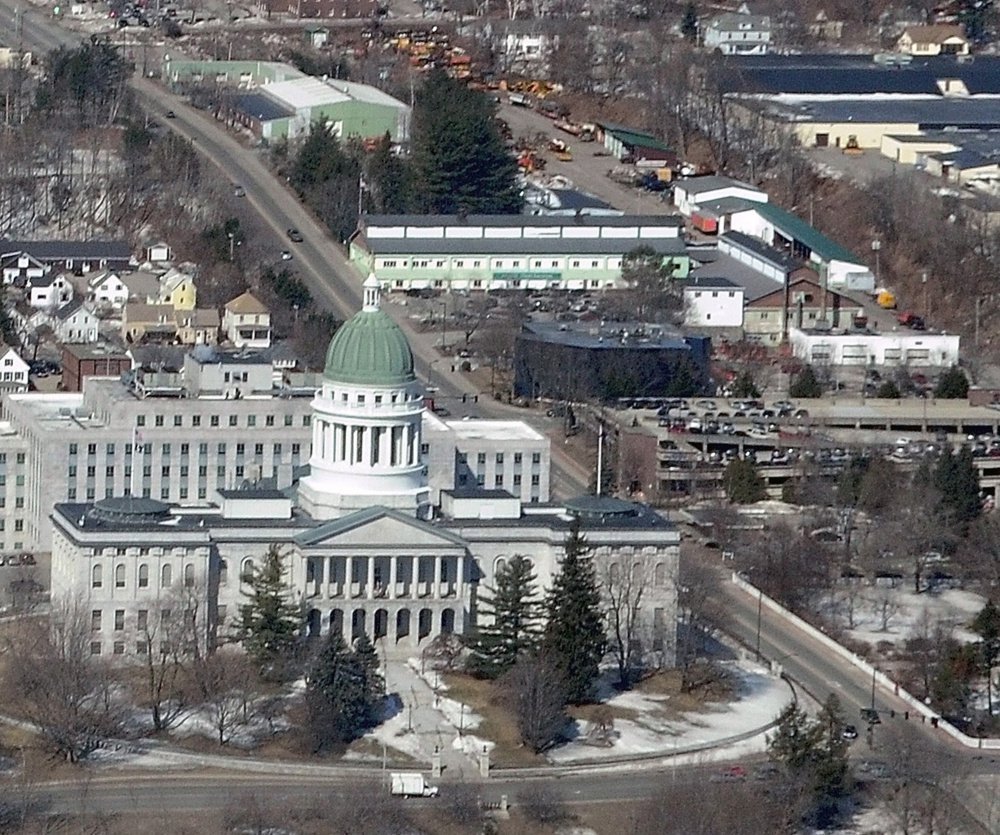Some buildings matter more than others. Sometimes it’s worth spending a little extra time and money on a building because it is so critical to the experience, the visual character, and the identity of a city.
Once there was a public building in Augusta had a cost overrun of 74 percent, yet no one complained. Why not? Because the building was important to Maine citizens. It was the State House, designed and built by the nationally-known architect Charles Bulfinch, which opened in 1832.
Today state government is proposing, and city government is reviewing, two new large state office buildings that will occupy a lot along Capitol Street in Augusta from Sewall Street to Florence Street. The smaller one, for the Maine Public Employees Retirement System is next to Florence Street. The larger one is for state employees and is in the middle of the site.
This will be the largest expansion of the State House campus since the addition of the Cultural Building in 1971. As with the Capitol building itself, as with the Cross Office Building, and as with the Cultural Building, the new proposed offices and their campus will stand for decades and even centuries into the future, and they will help define the experience of Maine’s capital city for millions of citizens, visitors, and workers.
First, the good news about the proposed buildings. By centralizing state offices these buildings will lessen traffic congestion on Augusta streets caused by state workers crisscrossing town for meetings. They will improve worker productivity by reducing time spent in cars, and increase time in face-to-face meetings. It will make it easier for Maine citizens to get service, particularly for issues that involve visiting more than one office. They are surely a better use for the land than the former ugly and outdated state maintenance garage. And the privately-owned buildings will pay property taxes to the city of Augusta.
Having said that, the initial design and layout for the huge, three-story state building is sorely lacking. Rather than expanding the campus of the State Capitol, the current design creates a 619-car parking lot surrounding the state office. The parking lot fronts along the critical corner of Sewall and Capitol streets, which when combined with the parking garage nearby would result in an unappealing and grim sea of cars and asphalt as the main entry to our seat of governance. The developer has made some modest revisions to the initial plan — reducing parking spaces by 45, and adding a small pocket park on Sewall Street — but it is not nearly enough to change the general feel.
The Augusta Planning Board is meeting Tuesday, Aug. 22, to discuss the proposal. We think there should be a major rethinking of the plan along the following lines:
• Make the space pedestrian-friendly. This means moving the large office building closer to Sewall Street, and moving the parking to the back, where it will be hidden from view because of the steep banks that surround it. This location will make it easier for citizens and workers to walk back and forth to the Capitol. It also means adding green space and trees along Sewall and Capitol streets where people can sit outside, talk, meet, and have a coffee. It means adding space for first-floor sandwich and coffee shops (with outdoor seating), and news and convenience stores along Sewall and Capitol streets.
• Make the buildings models of energy-efficient and healthy design. We know what an energy-efficient building looks like — for example, Hannaford’s in Augusta has LEED (Leadership in Energy and Environmental Design) certification — and this building should meet LEED standards as well; it will save taxpayers money in the long run. Also, modern office layouts (as promoted by the Center for Active Design) improve employee health and productivity by encouraging walking and social interaction; these innovations should be incorporated into buildings that will house thousands of Maine workers for generations to come.
• Make the buildings visually distinctive. It is worth the state spending an extra dollar or two per square foot in lease payments to make this building something that Maine people will be proud of. No one complained when Bulfinch went the extra mile in 1832. Future generations of Mainers will thank us if we spend the extra time and money to make these buildings special, and make the Maine Capitol Campus a place people will treasure visiting.
This is our chance to contribute to Maine’s future. Let’s take the time and do it right.
Brian Kent is an urban designer. Frank O’Hara is a planner. Both have consulted for the city of Augusta in the past. Roger Katz represents Augusta in the State Senate.
Send questions/comments to the editors.



Success. Please wait for the page to reload. If the page does not reload within 5 seconds, please refresh the page.
Enter your email and password to access comments.
Hi, to comment on stories you must . This profile is in addition to your subscription and website login.
Already have a commenting profile? .
Invalid username/password.
Please check your email to confirm and complete your registration.
Only subscribers are eligible to post comments. Please subscribe or login first for digital access. Here’s why.
Use the form below to reset your password. When you've submitted your account email, we will send an email with a reset code.